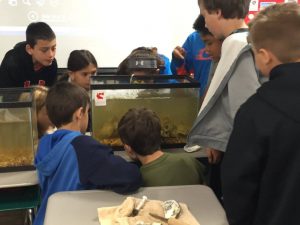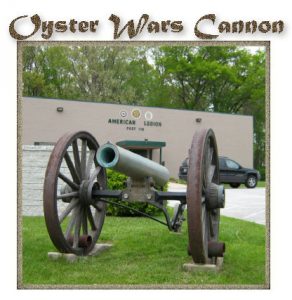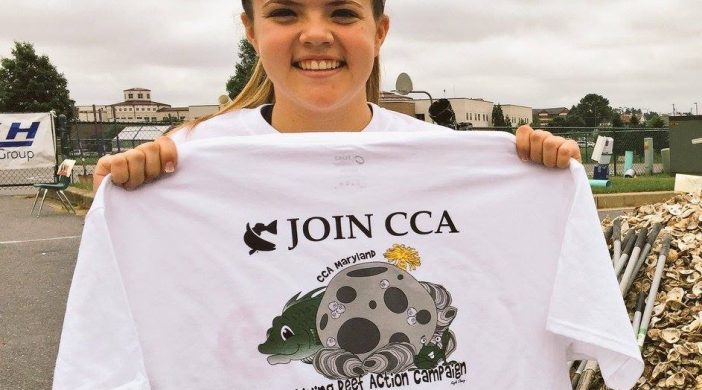(Central Region Chapter)
Students and faculty from Friendship Valley Elementary School (Westminster, MD) and Resurrection-St Paul School (Ellicott City, MD) have recently collaborated to create weeklong educational and hands-on restoration experiences at their schools. These schools are working cooperatively with the Building Conservation Trust (BCT) and Coastal Conservation Association of Maryland (CCA) to create STEM learning activities that are focused on oyster restoration and why creating new marine habitat is important to restoring the fishery in the Chesapeake Bay.
“Cooperative efforts like this support student career development in a variety of natural science disciplines while promoting BCT’s mission to foster habitat stewardship and educate coastal communities on the value of conservation.”
– J.R. Whitsell, CCA Maryland’s Vice Chairman of Habitat.
Through the efforts of CCA’s Habitat Committee, 518 students will be provided practical, hands-on marine science educational opportunities by playing an active role in creating new reef habitat. Resurrection-St. Paul is a STEM school with a Green School designation and they already devote a large portion or their environmental  studies to the Chesapeake Bay Watershed. CCA and BCT hope that student programs like this continue to help educate coastal communities by not only raising awareness to the perils that our reef habitats continue to face but also raise awareness to the threat this is creating to oysters, fisheries, and the overall water quality of our estuary. Fourth Grade Teacher, Sharon Miller, was instrumental in bringing CCA’s Living Reef Action Campaign to Friendship Valley this spring. She explained, “I wanted our students to be able to help the bay’s recovery because in the future it will ultimately affect their ability to enjoy recreational activities such as swimming, crabbing, fishing and just being able to enjoy the beautiful scenery.” Miller feels “if we all continue to make changes in how we interact with the bay, students will be able to continue enjoying these things, however, if we allow the bay to decline, those activities may not be available anymore.”
studies to the Chesapeake Bay Watershed. CCA and BCT hope that student programs like this continue to help educate coastal communities by not only raising awareness to the perils that our reef habitats continue to face but also raise awareness to the threat this is creating to oysters, fisheries, and the overall water quality of our estuary. Fourth Grade Teacher, Sharon Miller, was instrumental in bringing CCA’s Living Reef Action Campaign to Friendship Valley this spring. She explained, “I wanted our students to be able to help the bay’s recovery because in the future it will ultimately affect their ability to enjoy recreational activities such as swimming, crabbing, fishing and just being able to enjoy the beautiful scenery.” Miller feels “if we all continue to make changes in how we interact with the bay, students will be able to continue enjoying these things, however, if we allow the bay to decline, those activities may not be available anymore.”
CCA’s Living Reef Action Campaign is a grassroots program focused on tying in common STEM learning standards for students with activities like this week long event.
“As a STEM school we work with real world problems and practice project-based learning”
– Patsy Grue, STEM Coordinator at Resurrection-St. Paul
She continued to explain, “We integrate our academic subjects to a theme and demonstrate what we have learned by completing a project to solve a problem.” The oyster themed week begins with curriculum lessons focused on how the health of the bay directly affects Maryland’s economy through fishing, recreation, shipping ports, agriculture and manufacturing industries. Students will be introduced to the purpose of organizations like CCA Maryland and CCA’s national habitat program, Building Conservation Trust, NOAA’s Oyster Restoration program, and the Chesapeake Bay Foundation. They will learn how businesses, private individuals and universities like Stevenson’s School of Science are assisting CCA and BCT in conservation and restoration efforts right here in Maryland through the Living Reef Action Campaign.
 As the Oyster War Week progresses, students will be treated to a piece of Maryland history as retired representative Greg Bartles, of Maryland’s Natural Resource Police, brings the historic 149 year old oyster cannon to their schools and shares stories of oyster police and the pirates of the Chesapeake. Here students will begin learning about the history of oyster harvesting in the Chesapeake and the important role oysters play in the ecosystem. Students will engage in activities focused on vocabulary, anatomy, habitats, and harvesting techniques as well as learning more about their culinary uses and how community restaurants are now recycling the shells to restore the population of oysters.
As the Oyster War Week progresses, students will be treated to a piece of Maryland history as retired representative Greg Bartles, of Maryland’s Natural Resource Police, brings the historic 149 year old oyster cannon to their schools and shares stories of oyster police and the pirates of the Chesapeake. Here students will begin learning about the history of oyster harvesting in the Chesapeake and the important role oysters play in the ecosystem. Students will engage in activities focused on vocabulary, anatomy, habitats, and harvesting techniques as well as learning more about their culinary uses and how community restaurants are now recycling the shells to restore the population of oysters.
Finishing up the weeklong event, students will shift to learning the differences between oyster beds and oyster reefs and what sustainability means to modern day harvesting practices. Class speakers and oyster filter feeding demonstrations will complement the lesson plans in the classroom. Some students may also get an opportunity to design their own three dimensional habitat structures on 3D printers. As the week wraps up students will engage in the engineering aspect of building concrete reef balls. Ron Buffington, a CCA Chapter President, said, “Together with Lehigh Cement, these students will be learning how the three-dimensional concrete structures they are building will not only create new oyster reefs, but also restore habitat for all types of Chesapeake marine life.” Buffington commented, “restoring these reefs creates better fishing opportunities for recreational and commercial fisherman alike.”
CCA Maryland’s Habitat Committee is committed to engaging our surrounding communities and schools by providing the necessary funding for hands-on educational opportunities like these that create better fishing opportunities for all anglers to enjoy.
BCT and CCA Maryland have rolled out a number of other habitat initiatives in recent months, including the ongoing Living Reef Action Campaign project, which utilizes concrete Reef Balls to restore oyster reefs in the Chesapeake Bay while engaging thousands of school students across Maryland in STEM-related learning activities.
For more information about CCA Maryland’s habitat work in the Chesapeake Bay, contact Rick Elyar at relyar@ccamd.org. Get connected to Ron Buffington, CCA Central Region President, on FACEBOOK by visiting the CCA Central Region Chapter to learn more about their Chapter meetings and events or by visiting CCA Maryland’s state website at www.CCAMD.org

